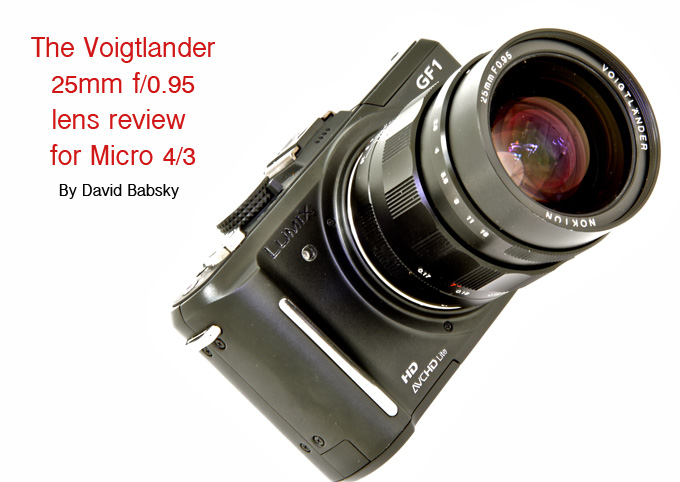
The Voigtlander 25mm f/0.95 Lens review for Micro 4/3 by David Babsky
The 25mm Voigtländer f0.95 lens for micro-four-thirds cameras: is this the perfect low-light, beautiful bokeh, ‘dream’ lens for Olympus and Panasonic owners?
Erm, sort of.
1 – It’s a manual focus lens. Leica owners will be used to that. Everyone else uses auto
2 – It’s excruciatingly sharp at f2.8 ..but not at all at f0.95 (which is the aperture you’d buy it for)
3 – It’s long and hefty – three times the size, price, and weight of Panasonic’s wide-aperture 20mm f1.7
4 – It’s €900 / £830 / $900 for a soft *close-focus* ‘portrait’ lens
That *close-focus* aspect is, perhaps, the main reason for recommending it. Focus goes down to 0.17 of a metre ..that’s six-and-a-bit inches. This is like having a bellows – or extension rings – fitted to a Panasonic 20mm lens. This let’s you get really close, and – when it’s stopped down to f2.8 – really *sharp* too!
_ _ _ _ _ _ _
[Hand Panny 20mm] – This is what the Panasonic ‘pancake’ 20mm lens sees at its closest, and widest aperture f1.7
[Hand Voigt 25mm] – This is what the Voigtländer 25mm sees at its closest, and widest aperture f0.95
_
But for general-purpose, night-time, low-light photography (or daylight photography with maybe a neutral-density filter on it)? Well, a couple of adaptors (Olympus to Four/Thirds and Four/Thirds to micro4/3) let you use an old Olympus 50mm f1.2 at almost the same aperture, and that focuses down to 17″, and – shooting at twice the distance (because it’s a 50mm lens) you get pretty much the same picture as the Voigt – while being sharper and clearer than this Voigtländer is when wide open. (Konica’s old ‘Hexar’ f1.2 Leica-fit 50mm, and other Leica interchangeable lenses, will focus only as close as a metre, so they’re not in the same league. Voigtländer’s own 50mm f1.1 costs $1000 but also focuses to only 1 metre.)
_
[Taxi 0.95] – ‘Grab’ shot at night at f0.95 from a passing taxi: nothing’s sharp (except perhaps that Carphone Warehouse shopfront in the gloom at lower right) because the Voigt’s depth-of-field at f0.95 is so shallow that only ONE distance can be sharp, and the rest will be indistinct. GF1, ISO 800, 1/800th of a second, f0.95
_
The Olympus 50mm lens turns through 180º from infinity to closest focus (0.45m/17″). With a similar 180º turn the Voigt focuses from infinity down to 8½”, but then keeps on going for another 90º to get another 2 inches closer. That means it’s slower – but more accurate – to focus all the way. Panasonic’s ‘kit-lens’ 20mm f1.7 takes about 220º to turn from infinity to closest focus (8 inches) manually (but why would anyone do that?) ..but only a fraction of a second to do that automatically.
So what’s the point of the Voigt? Marketing, primarily. f/0.95 is the “triumphant” achievement of the Leica lens designer(s) at Solms for the current ‘Noctilux‘ ..the low-light 50mm lens for the Leica M9 (and other M models). Everyone – it seems – wants one; Leica dealers are all sold out, and the waiting list is about a year long. (There are usually old Canon full-frame 50mm 0.95 lenses knocking around on eBay ..and, of course, equivalent old TV and 16mm-film lenses of 25mm f0.95 like Angenieux, Meyer, Soligor, Navitar, Berthiot, Schneider, etc, which can all be engineered to fit micro4/3 cameras.)
But why does anyone want that 0.95 Noctilux performance though? Its depth-of-field is wafer thin ..and the closer you focus, the less depth there is, so the more difficult it is to get the focus right. Perhaps it’s like buying a Titanium M9, or a Plutonium M6, or a Tantalum MP. Some people have just gotta have it “because it’s there”, as George Mallory supposedly said of Mount Everest.
So 0.95 has a bit of marketing value. “If I can’t have a 0.95 50mm Noctilux, at least I can have a 0.95 25mm (same thing as a 50mm when used on an m4/3 camera) Nokton!” ..but the question is still “why?”
Panasonic’s own 20mm ‘pancake’ gives the same slightly wide view on m4/3 as a 40mm lens gives on a full-frame 35mm camera. (A bit wider view than a ‘standard’ lens, a bit more depth-of-field, a good wide aperture without such large, heavy glass as f1.7 would be on a 50mm lens.)
But.. that Panasonic 20mm isn’t so much *fun* as Voigtländer’s ‘Nokton’. The 20mm “just does it” ..it just takes photographs: squeeze the button, the lens focuses, you’ve got the shot. With the ‘Nokton’, you have to work at it: you’ve got to hold and twist the lens, try to get the focus right ..go up to the focus, a bit beyond, then wind back to make sure that it’s REALLY sharp, then squeeze the button. There’s more *involvement* ..but, of course, that doesn’t mean the photos will be any “better” ..though with all that effort, they may be more memorable for the photographer.
So the 25mm Nokton is a $900 way to have *fun* with photography. But it means you can’t just point and shoot and get quick, sharp results. It’s like a “stick shift” (manual gear change) car, compared with an automatic. It’s like hauling in the sails with a “grind it yourself” winch, instead of just pressing a switch. It’s like climbing the stairs instead of taking the lift (elevator). There’s a bit of exertion and effort involved, instead of just pointing and squeezing. Maybe that – and a suggestion of “exclusivity” with that f0.95 hole in the front – is what seems to make the f0.95 Nokton appealing.
But is it really any good?
_
[A V25 0.95] – Angie in the bathroom. Voigtländer 25mm at f0.95. With this wide aperture the surroundings are smeared away, and you concentrate on her face.
–
[A P20 1.7] – Similar shot, from the same distance, with the Panasonic 20mm pancake at f1.7. Angie’s very sharp, but that background has become a distraction. Your eyes don’t know where to look.
–
[A Oly50 1.2] – Same shot, same distance, but with an old Olympus 50mm f1.2 from an Olympus OM2 35mm film camera, with a couple of simple off-the-shelf adaptors to fit it to micro4/3. Pow! That’s impact. You don’t look anywhere except her eyes. (The 50mm behaves like a 100mm f1.2 telephoto on the small m4/3 sensor.)
–
[A Can85 1.8] – Same shot, same distance, with an old ‘traditional’ Canon rangefinder f1.8 Leica-fit ‘portrait’ lens and an off-the-shelf m4/3 adaptor. Really TOO big ..no escape, overwhelming! (The 85mm becomes a 170mm on the m4/3 sensor!)
(All ISO 200, Panasonic GF1, straight out of the camera jpegs, with no adjustment. The Canon lens gives a slightly yellower look than the others.)
_ _ _ _ _ _
At its widest aperture of f0.95 anything slightly out of focus is “smeared” out, giving a very soft and un-distracting ‘bokeh’ (out-of-focus highlights), and a ‘dreamy’ appearance to anything which isn’t sharply focused. And, of course, that produces great differentiation between what you’ve focused on, and what you haven’t ..a kind of ‘3-D’ effect, in which the sharpest zone ought to ‘pop out’ like a cardboard cut-out in front of a blurred background ..that’s what happens with the genuine Noctilux.
But the closer you get to whatever you’re shooting, and the wider the aperture you use, the shallower that sharp zone becomes, and – with this Nokton – all of what should be sharp starts to look soft, because out-of-focus areas bleed into the sharp zone. Leica’s Noctilux is optimised to give the sharpest possible focus at its widest possible aperture by using ‘floating elements’ in the lens structure and highly refractive glass. This Nokton is NOT optimised for sharpest focus at widest apertures AND at closest shooting, but tries to provide absolutely everything: very wide aperture and very close focus ..but that gives more general blur and softness the wider and closer you go. The results can be charming, but you could almost use a $25 plastic lens. All the 11 pieces of glass in the Voigt move together as one chunk; it’s not optimised – unlike the Noctilux – to give the same sharpness at all apertures when focused *at different distances*. (In Leica’s Noctilux, the rearmost two pieces of glass move separately from the others when you focus at different distances to maintain absolute sharpness, always. The Voigt isn’t that sophisticated. But of course nor is it that price.)
Like Leica’s previous Noctiluxes (Noctiluces..?) and some other, older Leica 35mm lenses, this 0.95 Nokton has a bit of “focus creep” as you change the aperture. (The focus shifts back and forth a bit.) This is pretty unimportant if you’re hand-holding; you only have to cope with it ..by re-focusing.. if the lens is on, say, a tripod – so I’ll dismiss the drift as immaterial.
Essentially, at its widest aperture – f0.95 – the Nokton puts an out-of-focus halo of blur around the region of sharpest focus, and that halo is comprised of the colours of the surrounding out-of-focus areas. The wider the aperture you use, the more this halo bleeds into the region of what should be sharpest focus, softening it. As the aperture is stopped down, though, this smear and bleed is quickly chopped away, leaving a region of really sharp focus ‘shining through’ and undiminished. But not at f0.95.
At maximum aperture this lens – like most others – also ‘vignettes’ the edges of the picture (the edges and corners appear darker; the centre appears brighter) so it emphasises, and draws your attention to, what’s in the middle. It almost looks as if it’s “pulling” light into the centre of the frame. But at its widest aperture the middle of the picture loses much of its detail and fine shading because the unfocused regions bleed into the detail that ought to be there. So at its max aperture (0.95) the results pull your eye into the centre of the picture, but there isn’t a lot of detail there to see.
Stopping it down from f0.95 to f2.8 de-emphasises the centre – and makes the middle more detailed, without that central “glow”. This gives sharp, but unremarkable pictures. In fact it looks no different than a similar shot taken with, say, any wide-aperture 50mm lens from twice the distance, for example the Voigtländer Leica-fit 50mm f1.7 (shorter and lighter than the m4/3 25mm f0.95, and only 2/3 the price).
A similar shot taken with Panasonic’s Lumix 20mm f1.7 lens is much sharper everywhere ..without the smearing of the 25mm at f0.95.. but without the remarkable ‘way-out-of-focus’ backgrounds which the 25mm Nokton can deliver on a small-sensor m4/3 camera.
_ _ _ _ _ _ _
[pub 25 0.95] – Shot with the 25mm Nokton at 0.95; soft face in the centre, but the centre’s nice and bright, where the lens has “pulled the light in”. And the ‘smearing’ at 0.95 reduces any appearance of grain. GF1, ISO 800, 1/100th sec.
–
[pub 25 2.8] – Same shot at f2.8. Sharper, but with the centre now darkened and ‘flattened’ and underexposed, and hence ‘grainy’, so the face looks blotchy with noise which wasn’t visible in the smoother 0.95 shot. Coarse, like ‘Tri-X’ film. GF1, ISO 800, 1/50th sec.
[pub 50 1.7] – From the same distance, but with the Voigtländer *50mm* f1.5 Nokton (a 50mm low-light lens for Leicas) at f1.5. Similar ‘smoothness’ and out-of-focus blur or ‘bokeh’ as the Voigt 25mm 0.95 Nokton wide open. (Identical to cropping and enlarging the 25mm 0.95 shot, but without the ensuing resolution loss or pixellation.) GF1, ISO 800, 1/80th sec.
_
So it’s swings and roundabouts: in the 25mm Nokton’s favour..
(1) – Backgrounds disappear way out of focus at f0.95 ..no other native (unconverted) m4/3 lens does this
(2) – Its “character” at f0.95 directs viewers’ eyes to the centre of the frame
(3) – It’s a cheap way to approximate the effect of an f0.95 Leica ‘Noctilux’
(4) – It focuses far closer (6.6 inches) than any other current lens for micro4/3
(5) – It has the greatest focusing range (∞ to 6.6 inches) of current m4/3 lenses
(6) – It gives a soft, smooth and unfussy ‘bokeh’ at f0.95
(7) – It’s a great ‘portrait’ lens, smoothly blurring the background, and not too sharp wide open
(8) – At its widest, but not its very closest, it gives pleasant “glowing” softness and can be stopped down for sharpness
(9) – Very appealing “glowing” pictures wide open, but not at its closest focus
..and against:
[a] – It’s sharp stopped down, but not at its very widest and simultaneously its closest – for $900
[b] – The genuine f0.95 ‘Noctilux’ is -w-a-y- sharper than this at 0.95 (..but costs $10,000)
[c] – At closest focus you’re lucky to get anything really sharp unless stopped down to f2.8, so why pay for f0.95?
[d] – It’s a long turn through 270º to adjust from infinity to 6.6 inches
[e] – Any 2nd-hand full-frame 50mm wide aperture lens + adaptor can give similar results for less cash
–
[Hy Pan 20mm] – Here’s what you get from the Panasonic 20mm ‘pancake’ kit lens at its closest and widest aperture;
–
[Hy Oly 50mm] – Same shot with an Olympus OM2 50mm lens on an m4/3 adaptor at its closest and widest aperture;
–
[Hy Voigt 25mm] – Same shot with the Voigtländer 25mm at its closest and its widest aperture.
(All at ISO 400, indoors, by window-light, all out-of-camera jpegs without any tweaking.)
Which one works best for you..?
_
It’s useful for “pulling focus” (manually adjusting the focus) when shooting VIDEO on an m4/3 camera, and for shooting m4/3 video in (almost) darkness and up very close.
For stills? The extra-wide f0.95 aperture gives soft results, extremely ‘smeared’ at its closest 6.6″ focus. For general photography you may be better off with a Leica-fit Voigtländer 50mm f1.5 Nokton – or something similar – with an m4/3 adaptor, unless you need exceptionally *CLOSE* shots with an m4/3 camera. A good 2nd-hand close-ish-focus 50mm (equivalent to 100mm on an m4/3) lets you crop afterwards to get a similar image to this 25mm at its closest. But this Voigt’s “..soft, smeared results..” may be what you want in a portrait lens (..unless you go for harsh, gritty realism).
‘Portrait’ lenses have traditionally been ‘soft’ – making wrinkles disappear – but they’ve been longer (had a longer focal length) than this ’25mm-behaves-as-a-50mm-on-m4/3′ in order to keep the perspective flattering (and not make noses look too big by being close to the camera), and to avoid the photographer’s intrusion into the other person’s space. Although it blurs the background, and gives soft results, this 25mm doesn’t let you step back away from your subject. To get a headshot that really fills the frame you’ve gotta stay pretty close. On the other hand, it puts a person ‘in context’ by showing some of their (blurred away) surroundings, too.
It MAY be just what you need, but it depends on what you like to shoot. Soft, contextualised portraits? Great! Harsh nitty gritty? No. Close-up sharp details? Yes, but only at f2.8 or smaller. The world in sharp focus? ..No: no point in paying extra for that 0.95 aperture.
If you’ve ever used a Pentax Spotmatic, well, that sums it up exactly; same feel, same old slow focus as an old Pentax SLR lens. It’s Nostalgia incarnate, but now ‘retro-fitted’ for use on any modern 4/3 camera!
_
More! Five shots, all almost the same, but with subtle differences (and I did move slightly between shots):
1 – [Cap Oly 50 1.2] Closest focus achievable with Olympus 50mm at f1.2, on an m4/3 adaptor. This behaves more like a telephoto lens, because when used on the small m4/3 sensor it’s equivalent to a 100mm f1.2. So its *perspective* is that of a slight telephoto lens.
–
2 – [Cap Voigt 25 0.95] Same photo, but shot from closer with the Voigt 25mm at f0.95 to show the Leica lens cap the same size, so the perspective is slightly different: the black smudges to the left of the lens cap (actually the strap of an M9) and the silver Konica lens behind the cap, and the black smudge to the right of the Leica cap (an iPad on the table) all come into the picture, or look a bit sharper. That’s because the Voigt 25mm has a *shorter focal length* than the 50mm of the previous shot.
–
3 – [Cap Pan 20 f1.7 man] Same photo, shot a bit closer still – to keep the lens cap the same size – with the Panasonic 20mm f1.7, focused manually, as autofocus won’t work this close. The background black smudges look sharper still because this is a even *shorter focal length*, and it’s a smaller aperture.
–
4 – [Cap Voigt 25 0.95 cu] Closest possible focus with the Voigt 25mm at f0.95. It fills the frame, and the background is all obscured, but it lacks contrast, ‘punch’ and sharpness. The black smudges at the left of the lens cap have pretty much dissolved away into ambient softness.
BELOW: Is that really worth $900, when the Olympus 50mm pic below, cropped to a quarter of its original size, is pretty much indistinguishable?
[ad#Adsense Blog Sq Embed Image]
HELP ME TO KEEP THIS SITE GOING AND GROWING!! IT”S EASY TO HELP OUT!
Remember, anytime you follow my links here and buy from B&H or AMAZON, this helps to keep my site going. If it was not for these links, there would be no way to fund this site, so I thank you in advance if you visit these links. I thank you more if you make a purchase! I have nifty search bars at the upper right of each page so you easily search for something at either store! I currently spend 10-14 hours a day working on this site and the only way that I can pay for it is with your help, so thank you! Currently my traffic has been increasing but my funds to pay for the site has been decreasing, so any help would be GREATLY appreciated!
Even if you buy baby food, napkins or toothpicks at amazon it helps this site, and you do not pay anything extra by using the links here. Again, you pay nothing extra by using my links, it is just a way to help support this site, so again, I thank you in advance ![]()
If you enjoyed this article/review, feel free to leave a comment at the bottom of this page and also be sure to join me on twitter or my new facebook fan page! Also, you can subscribe to my feed at my subscribe page HERE and read these posts in your browser or news reader! Also, the new forums are NOW OPEN on this site so get involved if you like! Thanks so much for visiting my site!

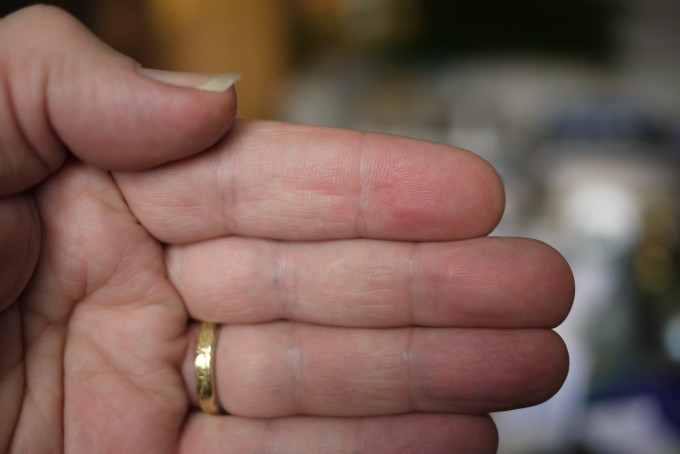
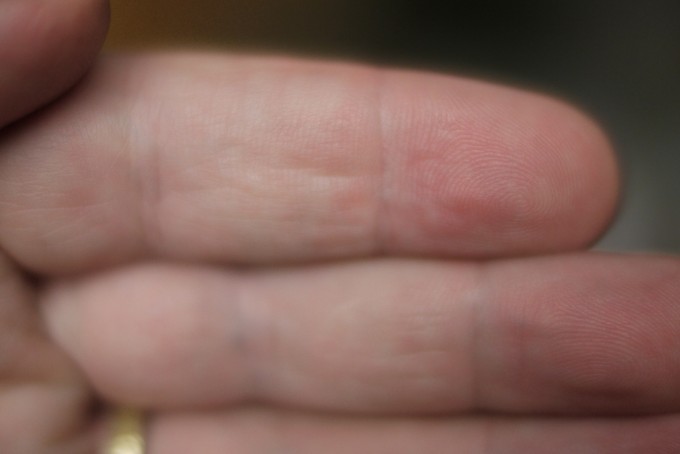
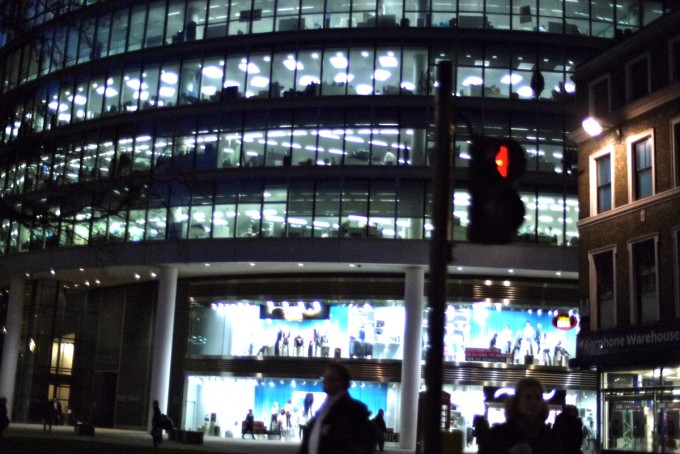
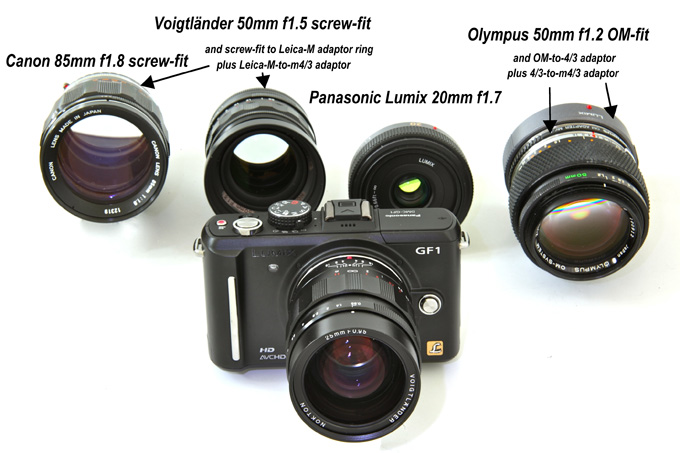
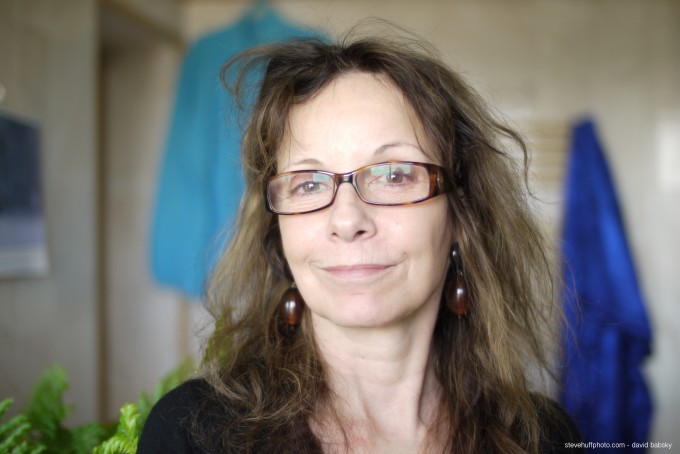
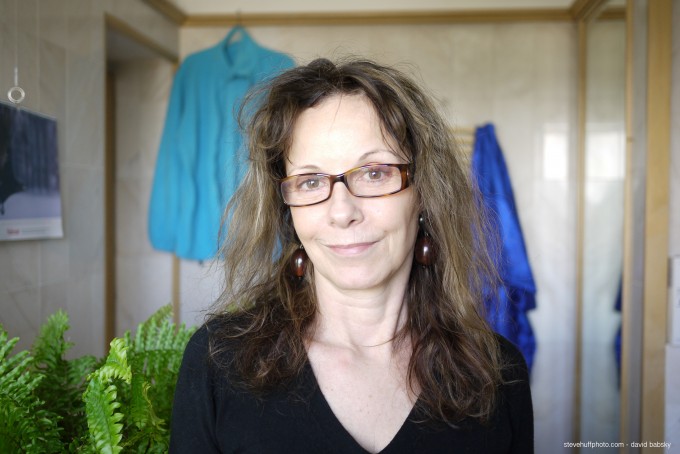
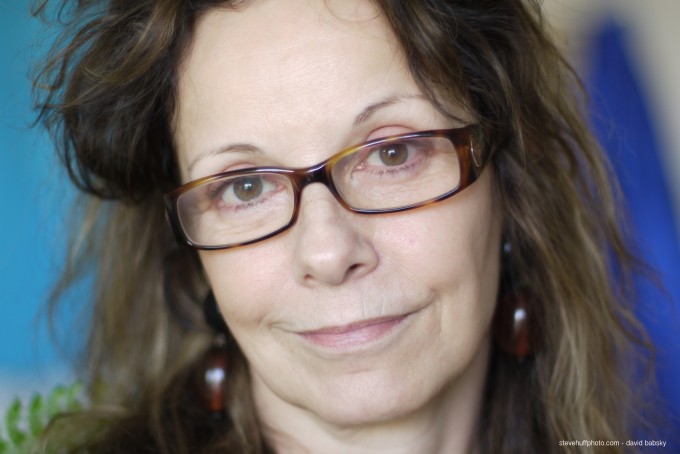
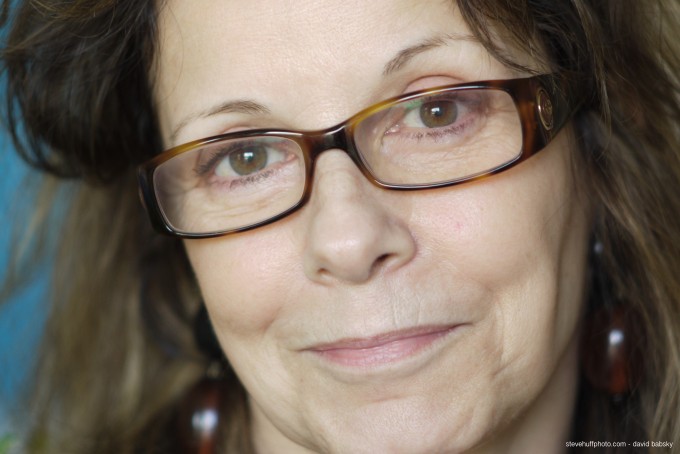
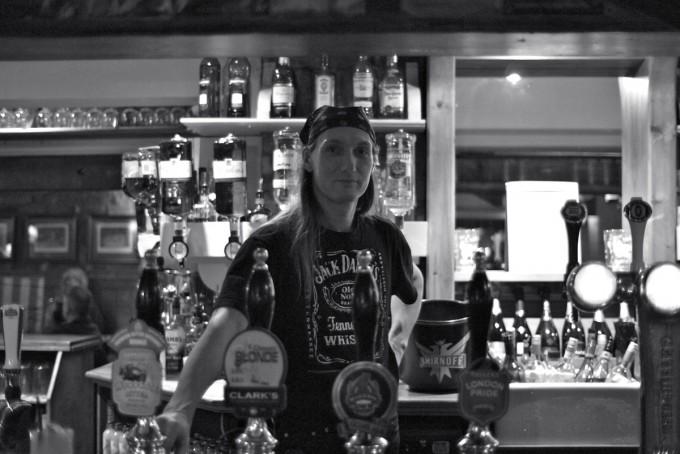
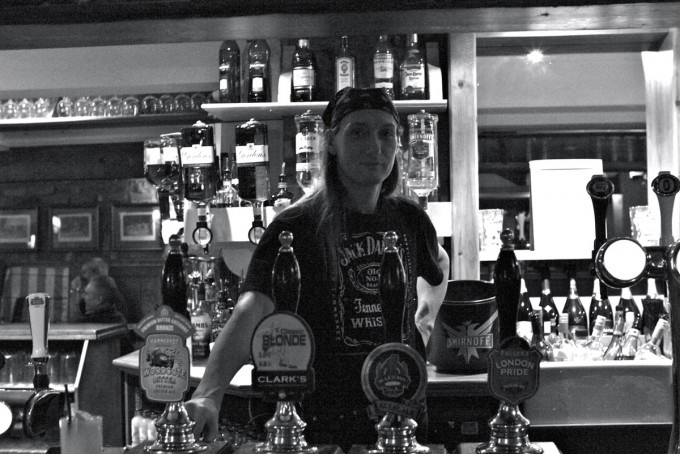
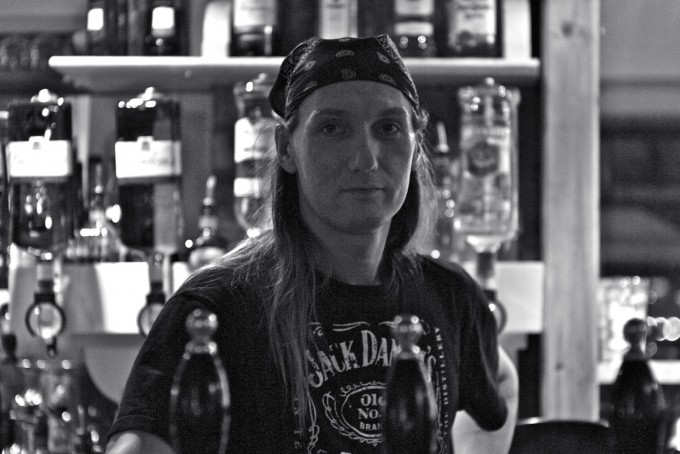
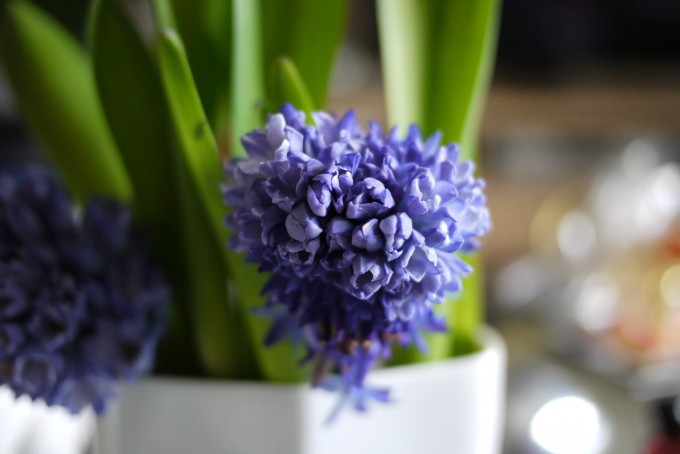
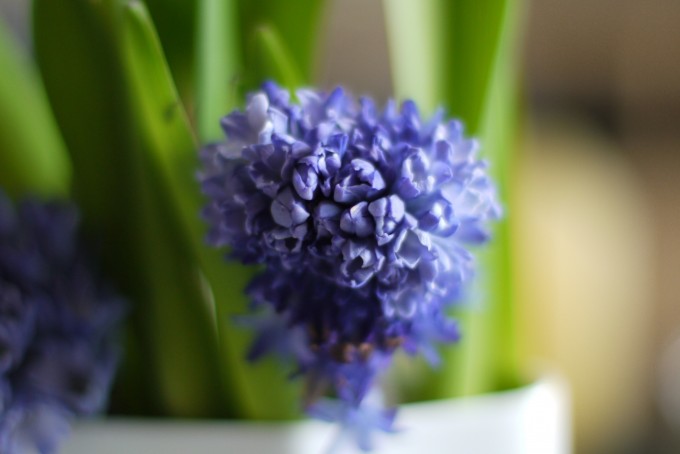
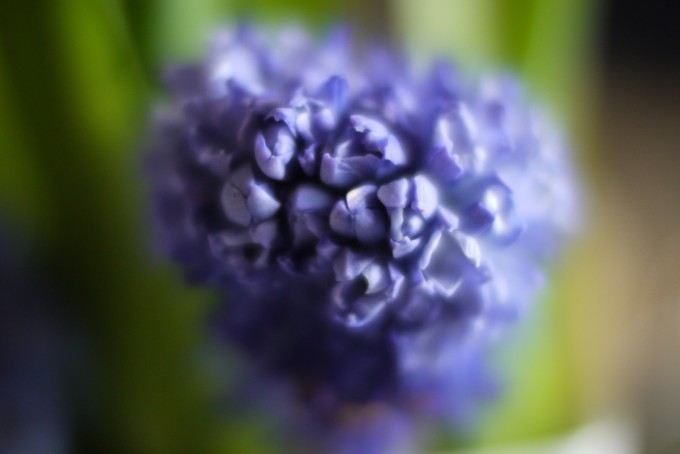
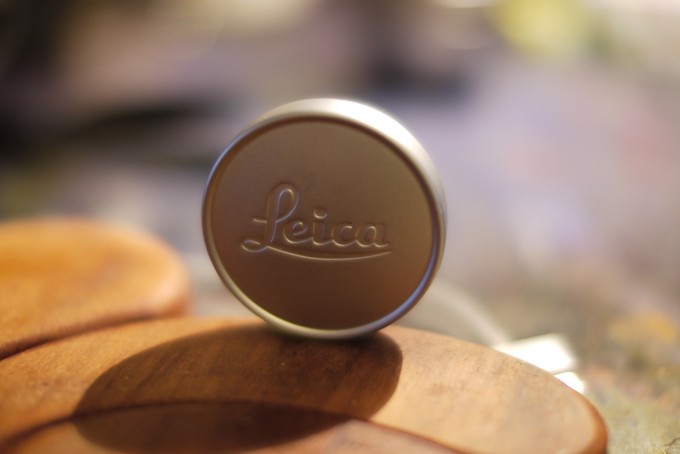
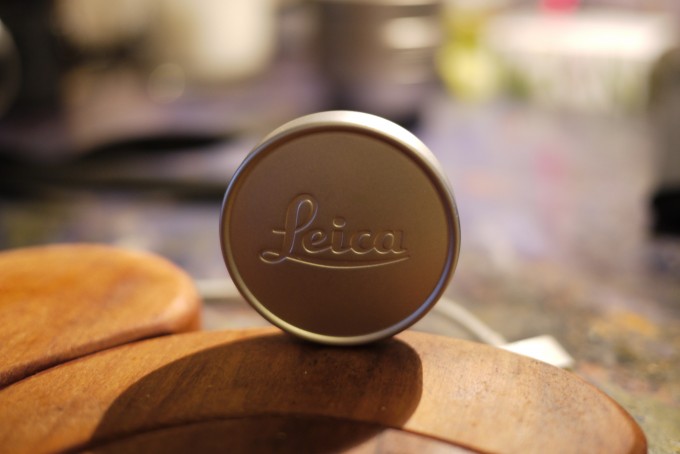
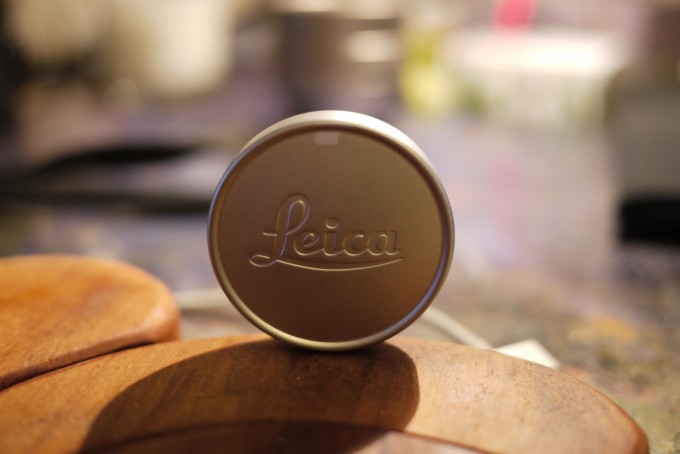
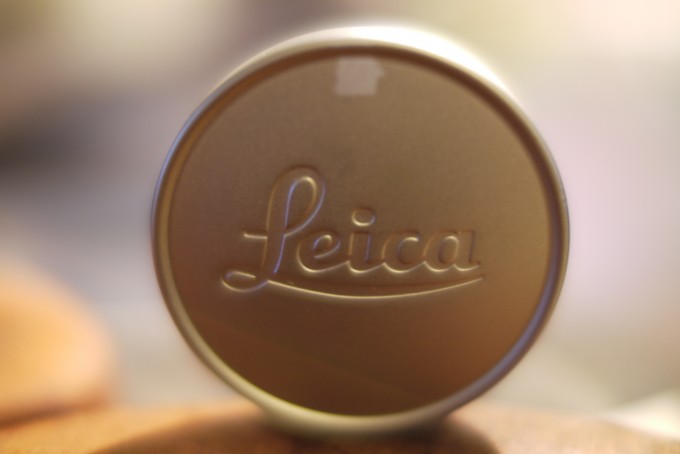
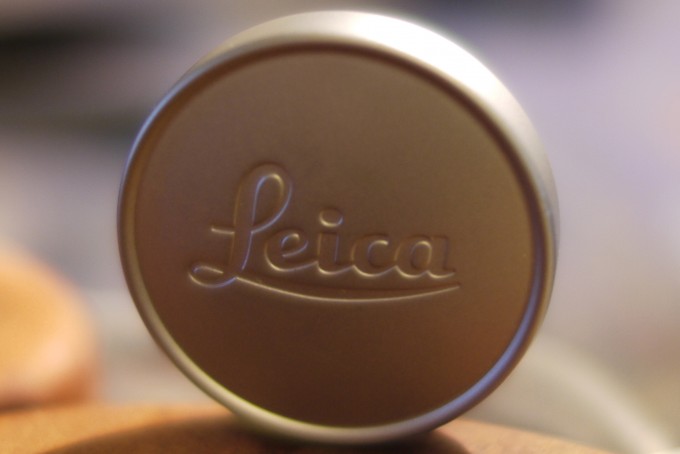



Remember, in crop factor cameras you have to multiply not only the focal length by the crop factor but the f stop and the ISO also. So, a 100 mm lens at f 5.6 at an ISO of 1600 on a full frame camera would translate into 50 mm f 2.8 and an ISO of 400 on a micro 4/3 camera. The 4/3 camera manufactures are not being entirely honest.? I have a 25mm f 1.8 4/3 mount which on a full frame would be 50mm f3.6.
I came upon this review out of curiosity after purchasing the lens. I think the sharpness at 2.8 along with 6″ close focusing makes it almost a macro. I find the lens easy to focus unless the subject is moving towards/away from you. In that respect it’s faster to focus than the fastest autofocus. At .95 images have a distrint dreamy look. There are plenty of sharp micro four thirds lenses but not enough for full dof and focus control.
So since this review we’ve got new version 2 of the Nokton, a Panasonic Leica 25mm f/1.4 and an Oly 25mm f/1.8 for comparison. And the sensor sizes have increased to 16Mpx.
Thank you for this clearly written and well documented review.
This is probably a pretty late post and comment on my part, but maybe someone will read this soon and comment on my question.
Since the newer f/0.95 MFT lenses from Voigtlander, such as the 17.5mm & 42.5mm, both have the new option/ability to turn a ring and make the aperture step-less/clickless, does anyone think Voigtlander will revisit and update the oldest 25mm lens to include the step-less/clickless ring option?
I kind of doubt it, but it would be cool if ALL 3 f/095 Nokton primes had the same cool feature.. then they’d truly all be part of a trinity set of great lenses from Voigtlander.
the 0.95 is about the ability to do fine control, every lens has errors in them and thats the characteristic.
for me a 50mm i would have to stand way back for a shot.. i just love to be in the scene.
Hi,
Don’t really understand this review, you really need to spend a decent amount of time with a lens to really get a feel for it, and the only comparison worth making is at the same focal length (for example the 25mm f1.4).
I’ve had this lens now for over a year alongside the Panasonic 20mm f1.7. Looking at Lightroom I’ve taken substantially more shots with the Nokton than the 20mm.
It’s a shame really to read a review like this as had the reviewer spent more time with the lens then we could have seen some shots demonstrating the artistic qualities of the lens over a weak comparison.
My advice to readers would be to look @ the Flickr group for this lens & get a feel for what it can do. That’s what I did when considering the purchase and couldn’t be happier. I’ll never sell this lens :).
Joe.
Hi Steve .
How this lens will be on Sony Nex 7 ???
I’m Looking for wide angle manual lens … what you suggest .
Preference somenthing fast !!!
Regards Dany
I have this lens for my OMD Em5 and I like it more and more. It is pretty much on the camera all the time.
Here is a quick snap, other than cropping, is straight out of the camera. Shot as a JPEG half a stop down from wide open at ISO 200. Gothenburg Central Station, 6.30 am, yesterday. I was effing cold, so, I didn’t spend much time faffing around. Frame, focus and shoot.
[IMG]http://i150.photobucket.com/albums/s114/boatshed/GothenburgRailwaySatation630ams.jpg[/IMG]
http://i150.photobucket.com/albums/s114/boatshed/GothenburgRailwaySatation630ams.jpg
I have this lens for my OMD Em5 and I like it more and more. It is pretty much on the camera all the time.
Here is a quick snap, other than cropping, is straight out of the camera. Shot as a JPEG half a stop down from wide open at ISO 200. Gothenburg Central Station, 6.30 am, yesterday. I was effing cold, so, I didn’t spend much time faffing around. Frame, focus and shoot.
[IMG]http://i150.photobucket.com/albums/s114/boatshed/GothenburgRailwaySatation630ams.jpg[/IMG]
Where is the pretty colored halo? I want to see a pretty colored halo. hmmp! no pretty halo? that sucks mommy.
I LOVE this lens!
I use it to shoot high def video for TV shows.
My favorite shot is to open it wide, set close focus and glide the camera over food.
That never fails to create sighs of delight from the viewer!
Too bad about everything else.
Hello Steve
My equipment: Panasonic GH2 1442 olympus 12mm f2
only video, part 2.35
panasonic 1235 f2.8 zoom is not bright enough to be totally versatile.
I look at both 25mm which have not stabilize
Leica 25mm 1.4 and 25mm 0.95 VOIGTLANDER
to realize such shoots like that
https://vimeo.com/36091372
based tests lenstip,
leica 25 at f1.4 has good resolution but a Vignetting
VOIGTLANDER 25 at f1.4 also has a good resolution, and less vignetting than the leica.
Important when filming and that we do not put the subject in the center.
After that is significantly mitigated by the use of framing 2.35
Few DOF, 1.5 or 2 meters
Is that the development is facilitated, because that is sharp with the bokeh?
or autofocus (and thus the leica) make life easier? (Spot focus not continuous)
I have a problem with the visor
For Voigtländer, normally you can add a 67mm ND filter in front of the visor.
But with the shape of the Leica lens hood, this is not possible to
which solutions for the leica to put a fader and a nop sun visor?
What other brands of sun visor?
what better? VOIGTLANDER leica 25mm or 25mm?
there is the same problem of using nd filter with the shape of the sun visor of the new 1235.
the bokeh of the new panasonic 1235 at f2.8 it would be much different than 1.5 meters that a 25mm f1.4?
thanks for your answer
have a good time
This is a speciality lens and has to be used to be appreciated! It’s manual focus, it has no electronic contacts etc…but it’s a f0.95 and the price paid is not just for the large aperture. The build quality, the feel and precision of the aperture and focus rings are excellent! IQ is outstanding (wide open certainly a bit soft but nobody expects to get corner to corner sharpness that wide open), used properly the lens is very sharp, at least for me. I bought this lens to compliment my new OM-D E-M5 and love every bit of it! I love bokeh and with f0.95, this lens will give you some creativeness that other M43 lenses don’t.
Those of you who are tempted to buy this lens, I highly recommend it. However, try it out at your local camera store before you buy it, I say this because I know some people just can’t live without autofocus and it’s best to get a feel of the lens and see if it’s enough to sway you away from the lack of autofocus. BTW, please ignore those comments like on a FF camera I can get the same DOF with a f1.8 lens etc. This lens is for the M43 world, don’t compare it with other formats. We choose to use the M43 format because of what the advantages and benefits mean to us and this is how we should also base our judgement and decision on this lens.
Hi
This lens performs “OKAY” on the GF1 but far better on the GH1 and other new lumix cameras.
This has become my favourite shooting lens and really needs to be tried out to appreciate it.
It is tack sharp as long as you use it properly.
When wide open at 0.95 it can be a bit soft but the effect is pleasing.
Above f.2 it is very sharp and easy to handle.
This lens has a bit of personality as you take it through its f-stops.
I F**KING LOVE THIS LENS.
I’ve used Leica M6’s all of my life until a few years ago when I picked up an M9, most of my time using an 1.4 35mm on them, for me Leica just didn’t work out in the digital world, so I’ve sold up, and bought a Panasonic GX1 with this lens on, and its blown me to pieces, both with its photos but more so with its video camabilities.
This is an amazing low light lens for the price, with the ability to really sort out the Micro 4/3 world, and teach people how to take photos again.
I just shot a short film with an AF100 using this lens…that caused me to buy a new AF100 and this lens. That’s how good it looked. I’ve used A LOT of cameras and lenses. Hands down, this lens delivers the most performance in terms of easy to light for and extraordinary images. Makes things and places look much better than they do in reality. I don’t do still photography so I don’t have any comments on that.
Viet
I have the same setup… I absolutely love it!
I can’t disagree with the review, but until you own and use one you could never know why it is desirable.
I was lucky, I just happened upon this lens when the first batch came out… now it’s hard to get.
My kit:
AF100, Hacked GH-1 (60mbps), 25mm f.95 Voigt, 35mm f1.2 Voigt, 50mm f1.4 sigma, 85mm f 1.4 Samyang.
Very happy with them all.
Amusante confrontation d’idée et de points de vue techniques. Chaque lentille a ses charmes et ses défauts. Soyons sérieux, pour la vidéo, et couplé au GH2, le Voigtlander 25mm est exceptionnellement charmant! C’est une petite beauté. La douceur des images, le crémeux du bokeh donnent une image juste belle et poétique. Cette optique est typée c’est certain. J’ai tourné un documentaire de 52 minutes pour Canal+ avec la Voigtlander 25mm (au moins 35% des images du film), pour les séquences de nuit ou quand j’étais en faible condition d’éclairage intérieur. Le rendu est magnifique. Bien plus intéressant et porteur de sens que les optiques Canon que j’ai utilisées par ailleurs.
Well, there are enough cameras and fast lenses and associated combinations and permutations around these days, that one can go mad trying to figure out what combo will give you the best results! As always, the combination that works the best is the one that has the best photographer and one who knows how to use his/her equipment for maximum effect. My old Canon 5D mounted with a Canon 50 mm f/1.4 or a Canon 35mm f/1.4 L series does a nice job for me. It is almost nuts how we fools continue to find ways to buy equipment that we don’t really need! At least, that’s what my wife says!
… which is not to say this lens is less than great – for many people it may be wonderful – but its main “claim to fame” (that fast aperture) is a blatant fabrication.
Damn – I can’t believe nobody else has stated the main problem with this lens … which is that you are paying for a 0.95 aperture and getting an f1.3 aperture at best … yes – it has been said now – Cosina blatantly LIE (no 10% variance in manufacturing specifications to blame here) about the maximum aperture of all their “fast” lenses … their 50mm f1.1 has been shown to be closer to an F1.4/F1.5 lens and this lens is the same – designed to lure in stupid people who wish to believe nebulous marketing claims over the various independent tests available with a quick internet search … enjoy the Cool-Aid boys !!
Where is these independant tests to say it is really f1.3, not f0.95?
I love my Panasonic 20mm & will always do so. However, the images I’ve taken with the Voigtlander 25mm, especially at f0.95, show a depth of detail & modelling that I wouldn’t previously have suspected my GF1 of being capable of. Of course it’s tricky to use – I don’t even possess the clip-on EVF, so rely wholly on the LCD / magnifier – and non-pocketable, but it really is worth the effort. Like some other commentators I also use an old 50mm f1.2 (in my case Minolta MD) with an adapter, and I love the results that gives, but I don’t always want a 100mm equivalent.
David, do you have a flickr account? if so, do you have a link?
.
Chris, no I don’t have a Flickr account.
any place online where you show your photos?
.
Well, no; I don’t really take pictures for exhibiting, showing, selling, or posting online: I take them, nowadays, just for my own fun (..though I did once earn a living – just about! – taking actors & actresses for ‘Spotlight’ (the casting directory), and teaching (developing & printing, etc) and writing – and broadcasting – etc).
I only post pictures on the web to use them to visually describe something, or for family and friends who want to see holiday snaps.
I don’t do ‘formal’ photos any more (‘compositions’ or portraits or similar) ..I just shoot quirky photos which appeal to *me* ..I like angles and shapes and patterns; here are some I took with assorted lenses on a GF1 the other month ..and in this collection of holiday pics, my favourites are all the “pointing” photos (friends describing what their finished house will look like) starting ..scroll down to them.. with ‘L1001731’, about a third of the way down.
Photos are my ‘memories’ ..if I can’t remember what I’ve done or where I’ve been, I look at my snapshots, and it comes flooding back. They capture the ‘feel’ of a moment for me. I don’t do ‘art’ photos any more; I see, and then “seize” that moment, to hold onto it and relive it.
i’m afraid i would have to agree with some of the commenters that this review could have been much better. the images that’s supposed to showcase the lens’s strengths fail to serve their purpose.
that said, i’ve come to a conclusion that this is a highly-specialized lens…and that if I have an extra $900, i’d spend it somewhere else. i hope the new panasonic 25/1.4 will be better for the price.
Depth og field and background blur is not dependent on focal length. As long as the subject size is the same, any given focal length will produce the same DOF at the same aperture.
How the Oly 50mm gives more background blur at 1.2 than the Voigt does at 0.95 when the lens cap is the same size in the frame, can not be correct.
All the reviews i have read until now conclude that the 0.95 probably is the sharpest MFT lens. At Louminous Landscape it`s sharper and outresolves the pannyleica 25 (a very sharp lens,non?).
I have both the 20 mm panny and the 0.95 Voigt. The panny has made me a fan of fast primes. The Voigt 0.95 is the most inspiring piece of photo equipment i have ever bought. Really gets your juices flowing. Shallow DOF and creamy bokeh. A real kick ass lens. Has made autofocus obsolete and zoom lenses totally uninspiring, for me that is.
The word has spread. It`s sold out constantly.
Rob
OK, Rob ..I’ll try to “..update (my) knowlegde about basic lens behaviour”.
I couldn’t reply to your post above as there’s no ‘Reply’ button, and I couldn’t post here a pic I shot the other day to illustrate my point (..maybe this topic’s been closed..) but I’m off to Paris tomorrow, so I’ll shoot some pics there with the Voigt 25mm at 0.95, and I’ll see if I can post the results anywhere here (..or perhaps as a ‘Daily Inspiration’ (!) if this topic is locked).
Ah; that post worked. Well, here’s what I was trying to post:
[img]http://www.stevehuffphoto.com/wp-content/uploads/2011/03/Man in Arts Theatre Bar-1.jpg[/img]
Let’s see if I can fix a link here to a larger version.
That’s 0.95, about 8 feet away (two and a half metres). The little woman at the man’s table is out of focus (..but, of course, we can’t see how deep the focus is between us and the man).
I’ll add some more, I hope, when I get back.
.
Oh, by the way, Rob “..How the Oly 50mm gives more background blur at 1.2 than the Voigt does at 0.95 when the lens cap is the same size in the frame, can not be correct..”
But that’s how those successive photos are on my memory chip; I haven’t faked a thing. Those are the pictures, un-cropped, exactly as shot, exactly as they came out of the camera (Panasonic GF1).
I’m not any kind of miracle worker: those are what I shot. Those are “..correct..” ..exactly as they came out of the camera.
This ‘review’ is completely pointless and badly written.
Sorry but your points don’t make any sense and the pictures you show to illustrate them are really bad.
If you do comparison shots with different focal lengths at least try to get the same field of view between them or the tests will be pointless.
As for the low light tests in the bar, are you complaining about the lens or the noise in the camera?!?
Your taxi shot is simply terrible, nothing interesting at all in it, it’s not focused properly because you did not even put in any effort to do so and I wonder why you even bothered to take it? Next time use the distance scale on the lens to help you with the focus.
As for this point: “[e] – Any 2nd-hand full-frame 50mm wide aperture lens + adaptor can give similar results for less cash”. You are aware between the different field of view a 25mm lens produces on m4/3 and a 50mm lens produces, no? How are they even remotely comparable?!?
The Voigtlander Nokton f0.95 lens is expensive but not for what you get, it is also usefull for more than just close ups and portrait as this ‘review’ suggests. I would recommend everyone to just ignore this and look at what real photographers can do with this lens and how it performs in the real world outside of these ‘tests’.
I am sorry if I sound harsh but sometimes not writing anything is better than writing rubbish.
Please go back and write a proper review on it and not this…whatever you call it.
.
Thanks for your comments, Cristian.
“..If you do comparison shots with different focal lengths at least try to get the same field of view between them or the tests will be pointless..” ..I thought that was what I did with the close-up shots of the Leica lens cap. The cap is (approximately) the same size in each of the first 3 shots, taken with a 50mm, then this 25mm, then with a 20mm.
Then there’s a close-up taken with the 25mm at its closest, compared with what the cropped-down view from the Olympus 50mm.
“..As for the low light tests in the bar, are you complaining about the lens or the noise in the camera?!?..”
Neither: I’m not complaining; I’m showing people what the results were. At f0.95 it’s OK, but soft. The barman’s standing in dim light, and not where he’s properly lit, but his face isn’t too bad. When the lens is stopped down to make the picture sharper, the combination of less light where he’s standing and a sharper image produces the equivalent of “graininess” on his face – as it would be called if I’d used fast *film*. I’m not complaining ..I’m just showing the results.
“..Your taxi shot is simply terrible … Next time use the distance scale on the lens to help you with the focus..” ..Yes, I know it’s terrible; that’s the idea: that’s what I’m trying to show ..that it’s not possible to get anything reasonable at f0.95 unless you correctly focus EXACTLY on the very shallow plane of best focus, and that any slight difference between what you’re aiming to get, and the ACTUAL distance of anything from the camera will give a disappointing or disastrous result. This pic is intended to *show* any people who might not be aware of it, that using f0.95 is very tricky. Good, well-focused pictures which are published, shot at 0.95, make many people want to buy a very wide aperture lens. But publishing GOOD pictures doesn’t show people how easy it is to FAIL to take good, properly focused shots at f0.95. We never see the FAILED, discarded shots of great photographers ..for the very fact that they are discarded! We generally see only their SUCCESSFUL shots. But the ratio of success to failure is often very high. So here’s a failed shot ..to let people see and know that you don’t always get “magical” stand-out pictures with an f0.95 lens.
“..You are aware between the different field of view a 25mm lens produces on m4/3 and a 50mm lens produces, no?..” ..Yes, very much so: that’s why there are the four photos of Angie; the field of view of this 25mm lens, followed by that of a 20mm and of a 50mm (and even an 85mm).
“..Please go back and write a proper review on it and not this…whatever you call it..” ..I call it a “real world” review; this is, I think, useful information for anyone who’s considering spending $900 on this lens.
You don’t have to agree with my assessment, of course; you may have an entirely different opinion of this lens. I think that it’s great for video (..I shoot plenty of video..) but that its usefulness on an m4/3 camera is mediocre (..possibly what people think of my photos!..) because it’s unsharp at f0.95. However, for soft portraits, that can be very good.
Thanks for your reply David!
“..I thought that was what I did with the close-up shots of the Leica lens cap. The cap is (approximately) the same size in each of the first 3 shots, taken with a 50mm, then this 25mm, then with a 20mm.”
These shots are the only ones I find usefull although they don’t really tell much about the lenses.
“Neither: I’m not complaining; I’m showing people what the results were. At f0.95 it’s OK, but soft. The barman’s standing in dim light, and not where he’s properly lit, but his face isn’t too bad. When the lens is stopped down to make the picture sharper, the combination of less light where he’s standing and a sharper image produces the equivalent of “graininess” on his face – as it would be called if I’d used fast *film*. I’m not complaining ..I’m just showing the results.”
Sorry but this does not really make sense and you can take a perfectly sharp photo of someone at f0.95:
http://4.bp.blogspot.com/_bzzMtXI-YmU/TS-KgRQ473I/AAAAAAAAT9k/DAXC13VoqOU/s1600/13-01-2011_01.jpg
http://2.bp.blogspot.com/_bzzMtXI-YmU/TSox2z19MjI/AAAAAAAAT9M/51eefPnMLSM/s1600/09-01-2011_03.jpg
http://3.bp.blogspot.com/_bzzMtXI-YmU/TSg4tLfXp5I/AAAAAAAAT88/DQ9iP-Vgedw/s1600/07-01-2011_01.jpg
It requires a bit more work than just pointing and shooting but if you spend 900$ for a lens you should put in some effort or you are better off with a $50 point and shoot.
“..Yes, I know it’s terrible; that’s the idea: that’s what I’m trying to show ..that it’s not possible to get anything reasonable at f0.95 unless you correctly focus EXACTLY on the very shallow plane of best focus, and that any slight difference between what you’re aiming to get, and the ACTUAL distance of anything from the camera will give a disappointing or disastrous result. This pic is intended to *show* any people who might not be aware of it, that using f0.95 is very tricky. Good, well-focused pictures which are published, shot at 0.95, make many people want to buy a very wide aperture lens. But publishing GOOD pictures doesn’t show people how easy it is to FAIL to take good, properly focused shots at f0.95. We never see the FAILED, discarded shots of great photographers ..for the very fact that they are discarded! We generally see only their SUCCESSFUL shots. But the ratio of success to failure is often very high. So here’s a failed shot ..to let people see and know that you don’t always get “magical” stand-out pictures with an f0.95 lens.”
Sorry but this is rubbish, no matter what lens or camera you use just blindly shooting out of a taxi window will always look like this.
Sure it is more difficult to focus at f0.95 than it is to focus at f8 but this does not mean that results are looking like this.
This shot in particular is my biggest problem with the review, it looks shoddy without care and and to me it seems you just wrote a ‘review’ of this lens for the sake of writing something.
Here’s a low light picture I took by using just the distace scale and I got it wrong but it still looks better than what you’ve posted there:
http://4.bp.blogspot.com/_bzzMtXI-YmU/TS4t13zwPSI/AAAAAAAAT9g/v0F_ULpzH_U/s1600/12-01-2011_01.jpg
“..Yes, very much so: that’s why there are the four photos of Angie; the field of view of this 25mm lens, followed by that of a 20mm and of a 50mm (and even an 85mm).”
Yes, so why recommend people get a 50mm lens instead ofa 25mm lens if they are completely different. Unless you say that effective 100mm is a better focal length for portraits where I agree with you but then why even consider a effective 50mm lens like the Nokton.
” ..I call it a “real world” review; this is, I think, useful information for anyone who’s considering spending $900 on this lens.”
I am sorry if I sound harsh but this is not a real world review, it is a shoddy review that just wants to generate talk for no reason.
You want to inform why people should not pay $900 for the Nokton? Then write about the Vignetting at f0.95, the corner softness at f0.95 (the center is really sharp), the high CA or maybe even the patience it requires to manualy focus but please not with blind shots taken from a taxi which would look bad with any camera and lens combination.
This is how a lens review should look like: http://www.bmupix.com/journal/2010/12/5/voigtlander-nokton-25mm-f095-corner-sharpness.html
You don’t have to agree with my assessment, of course; you may have an entirely different opinion of this lens. I think that it’s great for video (..I shoot plenty of video..) but that its usefulness on an m4/3 camera is mediocre (..possibly what people think of my photos!..) because it’s unsharp at f0.95. However, for soft portraits, that can be very good.
.
Thanks for your reply, Cristian.
“..Sorry but this does not really make sense and you can take a perfectly sharp photo of someone at f0.95:
http://4.bp.blogspot.com/_bzzMtXI-YmU/TS-KgRQ473I/AAAAAAAAT9k/DAXC13VoqOU/s1600/13-01-2011_01.jpg ..”
Wow! Is that really 0.95? ..I don’t see it myself, as everything’s in pretty sharp focus from the Guinness glass in front of the chap to the coat-hanger and the pots and jugs behind him. I wouldn’t have thought that’s 0.95 ..it looks more like f2.8 to me ..so you’re a real magician, Cristian ..I certainly couldn’t do that!
..And the ‘bokeh’ – the little out-of-focus swirls, which look as if they must be overhead lights – in your second picture, they look much more ‘defined’ – to me, anyway – than this Voigt usually gives at 0.95.
So maybe we have had quite different experiences with this lens.
Thanks for your rainy picture of Cannon Street Station. Yes, you’re right: it is out of focus, but I do like the reflection down the left side.
“..Here’s a low light picture I took by using just the distace scale and I got it wrong but it still looks better than what you’ve posted there..” ..that’s my point exactly: you got it wrong. You missed the focus. Just like I did. That’s what my ‘Taxi’ shot was showing; that it’s easy to “get it wrong” ..by using the focusing scale, I got the Carphone Warehouse shopfront in focus, whereas I thought I’d get the building at the rear in focus ..I didn’t ..I missed the focus ..exactly as you did with that rainy shot.
We’ve both done exactly the same thing: missed the focus. The only difference seems to be that you hate my picture, but I think yours is – maybe accidentally – intriguingly quirky!
“..why recommend people get a 50mm lens instead ofa 25mm lens if they are completely different..” ..What I was trying to show – but I obviously failed, in your opinion – is that a lens which costs far less (an old Olympus 50mm f1.2) ..wait for it!.. gives *similar* results (at twice the distance from whatever you’re shooting) as this $900 Voigt, for far less money!
These are, as Steve reminds us, “real world reviews”. This review was aimed at showing people what this lens can do and what it can’t, and how it compares to other lenses insofar as the *results* it can give and in terms of the money it costs. It’s like cars: this one’s very comfy, that one is comfier but costs much more, this one gives minimal fuel consumption and a great ride, that one guzzles more gas but costs less for the same great ride.
“..but please not with blind shots taken from a taxi which would look bad with any camera and lens combination..” ..that was just one shot, not (plural) “shots” ..and it obviously stirred you up and infuriated you. You thought my Leica lens cap pictures “..are the only ones I find usefull..” but, of course, those may have infuriated other people because they aren’t “pictorial”, aren’t “street shots” and may seem “pointless”. I’m trying to cater for everyone, and I’m sorry that I obviously failed to satisfy your own tastes in a lens test.
Finally: “..This is how a lens review should look like: http://www.bmupix.com/journal/2010/12/5/voigtlander-nokton-25mm-f095-corner-sharpness.html ..”
But frankly, I really don’t care about ‘corner sharpness’. With different things or people of different shapes and at different distances, who cares about ‘corner sharpness’ unless you’re an architectural photographer, in which case you wouldn’t use a Voigt 25mm on an m4/3 camera; you’d use a Rodenstock or similar stopped down to f22 on a rising-front MPP or a Sinar or a Linhof or a Plaubel monorail, like I used to.
If someone’s serious about ‘corner sharpness’ and about teeny weeny details in the extremities of their shots – and it’s really important to them – then m4/3 is not for them, as it doesn’t really bear much enlargement anyway. They should be using at least full-frame 36mm x 24mm and an 18 or 20 megapixel camera ..or, preferably, something with a larger sensor altogether.
So the review site you mentioned – although it’s *your* cup of tea – just doesn’t do anything at all for me. And I doubt that you were concerned about the ‘corner sharpness’ of your rainy Cannon Street pic ..or your other three pics you referred to.
I’m very sorry that my review has riled you ..I think that maybe we just have to realise that different people have different points of view, and we don’t all share the same opinions. But that’s what makes the world interesting, don’t you think?
Yours, David.
” Wow! Is that really 0.95? ..I don’t see it myself, as everything’s in pretty sharp focus from the Guinness glass in front of the chap to the coat-hanger and the pots and jugs behind him. I wouldn’t have thought that’s 0.95 ..it looks more like f2.8 to me ..so you’re a real magician, Cristian ..I certainly couldn’t do that!”
Yes you can. Go try.
At a distance of 4 meters you get a DOF of 0.77 with the Voigt 25 mm at 0.95 on a micro43 sensor. Now that`s plenty. The distance in that pic is probably even more, as it looks like it`s taken through a window. You will only achieve very light blur of stuff in the immediate background.
You really need to update your knowlegde about basic lens behaviour.
Rob
Your comment is a better review than the real ‘review’. And your photos put those in the review to shame.
Hello Christian, could you tell me how you got the results in the pictures that you uploaded as examples please?
Not surprised at the analysis of the Voigtlander lens . I have an EP2+ evf with a nikon adaptor and have been very pleased with the results using my collection old nikon lenses. Has anyone tested this combo?
For point and shoot i use a cannon G7
I get repeatedly annoyed at lens reviews that present a series of badly taken photos as evidence of the pros/cons of a particular lens. For a start it gives the impression that the reviewer has no technical ability. A quick google search establishes otherwise – David is clearly an authority on the subject, which suggests he spent little time working seriously with the lens in question.
So without some acceptable photos or solid hands on experience, what we have here is a nicely constructed standard lens in the m43 format with an extremely high light gathering ability, as well as a surprising macro ability. The only obvious rivals are the Leica 24mm 1.4 and Panaleica 25mm 1.4. Without direct comparison to those lenses I can’t see what else there is to say?
.
Hi, RTZ.
The Leica 24mm f1.4 results are quite different (..I’ll dig some out; I can’t remember the difference offhand).
But I didn’t want to compare this Voigt 25mm at £830 ($900) with the Leica 24mm at £4000! ..That seemed a bit pointless to me (..similarly with a direct comparison with Leica’s £7000 ($10,000) Noctilux 0.95). I wanted to keep the revue within the realms of real-world spending, for most people.
in this review http://www.luminous-landscape.com/reviews/lenses/voigtlander_f095_25mm_micro_43_nocton.shtml you can see that the nokton at 1.4 retain a little bit more of detail than the panaleica 25mm at 1.4
I own this lens and think this review has done very little justice to it’s true merits. It is a superbly crafted lens that offers excellent image. Using it with my EP 2 and VF 2 is a delight.
Not sure what the point is in posting photos of underexposed barmaids proves other than the ISO 800 abilities of the Gf 1.
Why compare an underexposed Iso 800 photo at .095 1/100 against a very under exposed Iso 800 photo at 2.8 1/50?. 3 stops slower and half the speed…….what?
Steve, this lens is more than capable of producing excellent photos, pity the reviewer just can seem to find them……
.
Gilly; that’s a fella. It’s a man. What did you think of the photo of Angie (..the woman)? Did that do justice to the lens? That was at ISO 200.
Apologies to the barman! Your review has certainly caused some lively debate especially from owners who are more than happy with the image quality and bang for your buck this lens offers.
I’m not sure if you used the EVF with the GF 1 for your review but if you didn’t I would suggest that using a camera that has one would certainly make using this lens a lot more enjoyable.
I’ve been thinking about getting one. But no – this lens is all wrong. 25mm – too short for portrait. 0.95 DOF is fine but it’s soft that open. Too heavy, hard to operate for normal 25mm lens. Instead I’m going for 40 1.4 Voigt. And 9-18 zoom from Olympus 🙂 Looking for normal lens – get Panny 20mm. Fast, sharp, AF and cheap.
Hmmm. Here’s precisely why you want *this* lens and the GH2 — to make incredibly film-like video with a pocketable camera.
Watch this:
http://vimeo.com/17062701
Partial still attached.
[img]http://www.stevehuffphoto.com/wp-content/uploads/2011/03/Screen shot 2011-03-01 at 1.00.08 AM.png[/img]
.
Yup, oesterle, it’s great for video, when mounted on a tripod or other camera brace.
And Philip’s video was shot entirely on a tripod, with time to focus each shot EXACTLY right, before pressing the ‘video record’ button.
As I said, “It’s useful for “pulling focus” (manually adjusting the focus) when shooting VIDEO on an m4/3 camera, and for shooting m4/3 video in (almost) darkness and up very close.” Definitely. But for stills, without a tripod, hand-held and wide-open? ..Possibly, but not as useful as with video.
stop the non-sense. philip did not use a tripod through the full video. If you know what you’re doing, you’ll get the results that are needed. If that video was shot with a leica fully open and if you didn’t know what you were doing in turns of pulling focus, guess what…
Not so fast. I just got my copy and from the first few gigs I’ve shot it appears to me to be a winner. You say to get an oly 50/1.2 for cheaper and better results? There’s a reason why I need a 25mm faster than the 20/1.7. I had the 20/1.7. great lens, but I like the 25/.95 much better. I shot a jam session @ 1.4 and had sharp spectacular results! I need more time to give a complete grade on this lens. So far it’s been well worth the $900. I do have a Super Tak 50/1.4. I use it for a different field of view. I will also get a 50/1.2. Probably Pentax so I can use it on my Kx IR. Even when Panasonic does finally put out the 25/1.4 it will be close to this in price. BTW whoever said it was difficult to focus @ .95 is blind, or not very experienced at manual focussing.
The test shot on the fingers show that at F0.95 the lens is only sharp within a very thin slice of depth of field (in-focus zone). That does not suggest it is not sharp wide open, just not sharp in the out of focus area, which is normal for a F0.95 lens. This lens is very sharp within the Depth of field. If you take the image with the Nokton at F1.7, the result will be very different and more comparable with the lumix 20mm. The glow happens on all fast lens at F1.0 or faster.
As the focal length is different between the lens you tested, as well as the aperture value, how can one lens be better than another under different settings?
I have done some test for your reference of comparison of some 25mm lens, and hopefully clarify my point.
http://www.flickr.com/photos/hintingphoto/sets/72157625182205103/
.
Hi, “hinting”, thanks for those comparison shots – but, unless I can’t see the wood for the trees – I don’t see any captions which say what apertures you used for those comparison photos ..so how are we to know what’s shot at what aperture? ..Maybe I’m missing something..
David,
The aperture and the lens description is on each photo on flickr.
Thanks for the review, as it is always good to see another point of view.
:hinting
David,
Don’t you know its sacrilegious to bad mouth anything coming out of Solms. The Noctilux is king.
Leica
For me, and most people using micro 4/3, the P20 1.7 (or similar modern native pancake’s) offer excellent quality at a great price. That’s largely what 4/3 is all about. But most importantly for enthusiasts it is incredibly easy to use.
The P45 2.8 is $200+ cheaper than the .95, produces great portraits (admitedly it could be faster and no doubt the Bokeh is not going to challenge the .95) and produces amazing macro shots with buckets of bokeh. So for about $100 more than the .95 you can have the P20 1.7 and the P45 2.8 as a diverse addition to your camera kit. That was the choice I made and could not be happier.
No doubt there are stunning images hiding in this lens. I have seen great examples. But it looks like hard work getting them out.
Thanks Steve and David!
I agree…It is the price-point of the Voigtlander that bothers me the most. Also…the Panny/Leica 45 is 20mm longer in focal length, 1/4″ smaller in actual physical length, has image stabilizaton and gets closer to the subject. I don’t think that the price is justified with all the caveats of this lens.
If I am going to try to go into this image making turf I am going to abandon my M4/3s and grab my Canon 5D and the 85mm f/1.2. (or maybe go into the M9 realm..but that is out of my financial universe…LOL).
“maybe go into the M9 realm”
If you’re looking for close-focus images, good luck doing that with a rangefinder!
The M9 can do great closeups! If the image code works, here’s a full-frame image of a postage stamp/envelope taken with my M9 and 65 Elmar.
[img]http://i110.photobucket.com/albums/n106/TomB_TX/M9-65Elmarat35hand-heldS.jpg[/img]
I’ve done much closer using my bellows mount 100 R lens…
LOL…..you’re bothered by the price point of the Noc25/0.95 but then go and compare it (say $1300 with a GF1/EPL1) to the 5D+85/1.4 (@ approx $4500), and the M9+glass?
Wow, I appreciate the time taken to review this lens, but you really went from the get go with the opinion that it is not a good large aperture lens.
how many ‘specialty’ 50mm equivalent lenses with this sort of aperture are sharp wide open? What do they cost? do they autofocus? Exactly.
This lens is by far the sharpest lens for micro four thirds – with ‘other sites’ test results showing that at f2.8 it exceeds a lot of other quality lenses too.
you buy these lenses for their wonderful effects wide open – and knowing that you need to stop down to achieve it’s sharpest results – like most lenses of large apertures.
Your conclusions are a bit strange. First, why the focus on macro photography? Surely no one would buy any of these lenses for that purpose? OK, it can close-focus. I’m sure you wouldn’t bad-mouth it as you do if it couldn’t. The close-focus capability is a bonus, nothing more nothing less. Anyway, I dare say it’s the fastest almost-macro capable lens there is. And to my eye it doesn’t fare much worse than the rest in this test. 0.95 isn’t a good aperture for close-ups.
Also, it’s the fastest 25mm in the world. That has to count for something. If you want some kind of separation on 4/3, this is your only choice at the moment. 50mm on 35mm-format is a well liked focal length. While I like 35-40 better, I’m sure this 25 will suit many. And It’s not that soft wide open. It’s perfectly comparable with most 50/1.2 I’ve seen even at 0.95. It may fall short when stopping down, but that’s another story.
A 50mm on 4/3 doesn’t make a very good general purpose lens. I don’t see the point in comparing them at all. The only reason I see is that you couldn’t find any fast lenses in the 25mm range to compare with. Probably because there are none. However, there’s plenty in the 35mm range. That comparison may have been more suitable.
Anyway, I find that the main flaw with this lens is something no one has really picked up on. It’s quite muddy in the extreme corners, and stopping down doesn’t help much. It doesn’t show in any of your examples, but shooting a landscape, or architecture would reveal it. This probably makes the Panasonic 20mm a better all-round choice. Plus it’s much smaller. And has auto-focus.
I honestly think the main draw back is how huge it is. With a pancake the camera still fits in my coat or could hang on my shoulder and i would barely notice it, as soon as you stick that thing on the front it becomes another “bring the photo bag” afair, and you begin to once again look like the tourist even in your own city.
As many already mentioned – why focus on macro photography and draw conclusions based only on that? I see this review somehow biased towards author’s personal preferences/needs and not reflecting actual possibilities and use of the lens. Try research more “standard” usage, low light situations, etc…
Well… I don’t see how one can compare a 50mm lens to a 25mm lens and draw conclusions…
The Nokton is a 25mm ie “standard” lens, so in terms of bokeh, framing, etc., it is an all different animal than a 50mm (tele on m43).
Beside, with a 0.95 lens on a m43 you get the depth of field of a 1.8 lens on a FF. Well, this is really useful, especially for cinematographers like me who want to work with a shallow depth of field (well, not incredibly shallow in fact).
I guess the Nokton is aimed at video enthousiasts. It is a perfect match with the GH2.
DOF wouldnt be all that short if your not focusing super close, ya its f.95 but its a wide lens either way… try an 85 1.4 or 1.2 on a full frame camera, now thats short DOF.
Yeah right. Because lugging around a full frame camera definitely is an alternative to an mFT + f/0.95 lens.
And again comparing apples to oranges concerning equivalent field of view. 50mm vs 85mm – where’s the point?
In response to everyone else, you should get your picture right at the time of capture, fixing it in post should be a last resort.
Looks like a specialty lens for advanced amateurs. Definitely not a beginner lens.
The portraits on these look amazing as well as the creamalicious bokeh. Before anyone complains about sharpness, that isn’t the point of this lens. If you’re looking for sharpness skip this lens for sure. Lens charts don’t tell nearly the whole story.
Small secret, the 20mm F1.7 is also a bit soft at max aperture for a medium prime lens. You need to step it down to F2.2-F2.8 for it to shine.
My strategy for using it would be definitely with an EVF and since it’s manual focus you should be able to click away fast so get a few captures at slightly different focuses to make sure you’re covered.
At $900 its quite a lot but I’ll definitely be adding it to my buy list.
I think it is important to mention that, this Voigtlander lens on m4/3 has the field of view and DOF equivalent to a 35mm f1.4 lens on an APS-C sensor, or a 50mm f2 lens on a fullframe sensor.
So, the DOF of this lens wide open doesn’t have THAT shallow of a depth of field. You could still throw a 50mm f1.8 lens on a 5D and have shallower DOF.
OK, but it is the only “real” reachable 50mm lens with such a high aperture for MFT. So it’s great for travelling with ONE lens. Open at night with 0,95 for street photography, closed from 2,8 at daytime for general purpose (or open with ND Filter). My old Olympus 1,4/50 is fine for portraits but not for “reportage”: 100mm is too long. And can you really compare the 1,7/20 Lumix (all plastic) lens with the (heavy metal) Nokton? The “feeling” made the decision easy for me. And Cartier Bresson had no autofocus and made some real nice (and quick) pictures…
I have to say that, because I bought the Nokton, an I WANT to like it!
Gerd
Your review quite focussed on evaluating the lens wide open close up. As you say, due to the lack of a floating element, the less than excellent performance does not come as a too big surprise. However, it would have been good, if you had included some data on how it performs in none-close up situations and at different apertures. While stopping down this lens seems to be odd, from some of the test shots I saw so far, it could be that it is one of the sharpest lenses for µ4/3rds available when stopped down. And it would be interesting to see whether f/0.95 becomes usable at greater distances. Which is where one would need the more shallow DOF anyway – close up the 20/1.7 has a shallow enough DOF anyway.
I don;t understand the point fo this lens?? why you want something expensive and bad?? i believe companies must focus and learn how to say NO to the product line.
Greg
Great read, but i have to say pointless lens… Whats the point of buying a $900 f0.95 lens and then use it at f2.8 to get some sharp results. Isn’t the whole point of fast glass to actually use it at its highest aperture?
Personally for me…I don’t get what all the fuss is about with this lens? Most of what the discussion is about about above is about portraits. The lens is EXTREMELY soft at .95 …and I bet very hard to focus effectively at that aperture. (especially with the optional External Panasonic viewfinder (DMW-LVF1).
The Lens costs $900….for a enthusiast camera..and really doesn’t deliver the goods. The review above states that the lens is not sharp (and proves it with images) until f/2.8.
(I know this is a little of …not comparing apples to apples, because of the focal length difference…but), for my money…for a portrait that has sharp eyes…my money is on my Pansonic/Leica 45mm f2.8 Macro lens. I can get nice a close, get auto focus, get sharp eyes with better bokeh than the Voightlander because at 2.8 at a longer focal, (almost twice the focal length) I “should” get MORE out of focus in the background than the Voightlander.
My shots with the Leica lens here: http://www.dropmocks.com/mOLGA
This lens is available (the Voightlander is almost impossible to get) for $200 less at Amazon or B&H and ..for me …with the autofocus (albeit a tad slow) I am going to get more useable shots.
If you want to shoot more dreamy, smeary (don’t get me wrong…I love that kind of work too…)…this may be the lens for you…or maybe you can pick up a lensbaby for micro 4/3 for a fraction of the price and come up with that look just fine..with lots of options. And again…the lensbaby is avaiable for purchase, today. To be fair ….I have seen some BEAUTIFUL soft photographs shot with the Voighlander at .95.
Great article David …Thanks…well presented…all food for thought…Photography has sooooo many options these days. I love it! It’s all good.